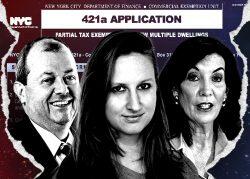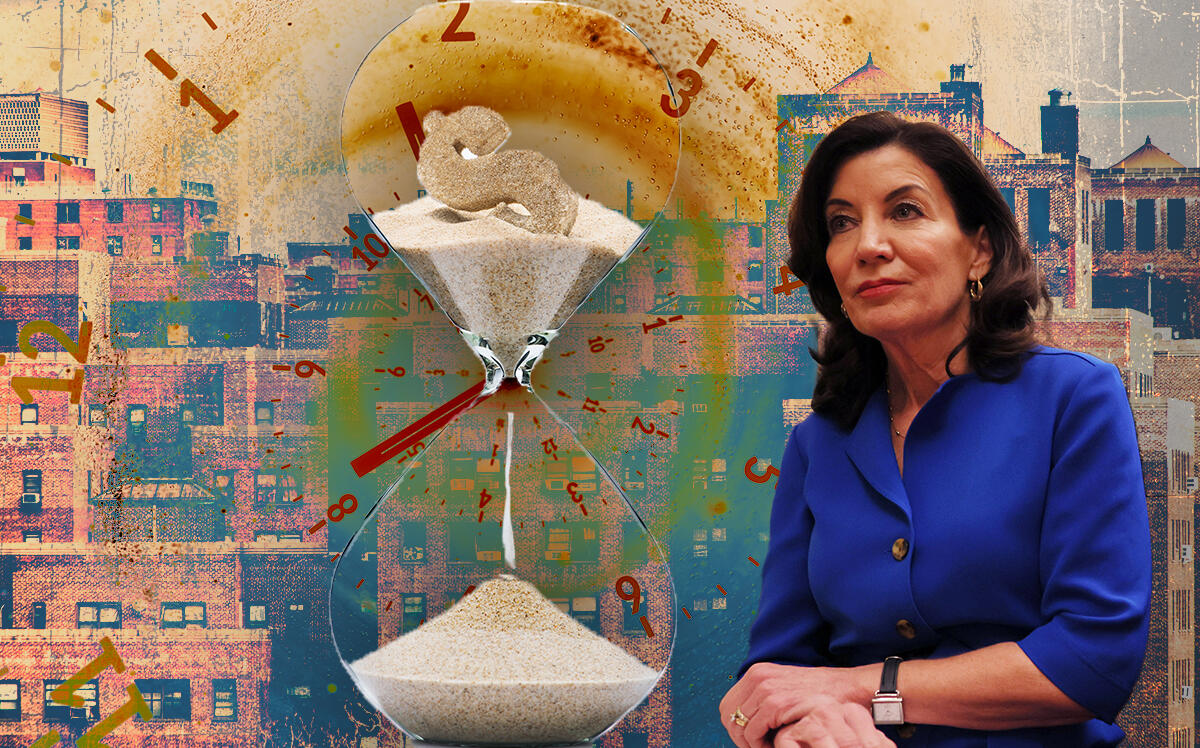Multifamily investors and developers piled into a stately Midtown building Thursday to try to make sense of their turbulent industry as rising interest rates, inflation and supply chain issues have sent construction costs higher than a tower crane. Meanwhile, lawmakers haven’t figured out how to make office-to-residential conversions viable.
Everyone at the conference had ideas for those roadblocks, but none had an elixir for their biggest problem of all: The multifamily development tax break Affordable New York, better known as 421a, expires June 15.
When it does, developers warn, few apartment projects will start in New York City. Indeed, although demand for rental housing is high, the pipeline of cash that developers need to build it is already frozen.
“It’s been a very healthy market over the last 12 to 18 months,” said Martin Nussbaum, co-founder and principal of Slate Property Group. “That has now come to a stop.”
The Real Deal asked the assembled executives, representing some of the city’s biggest multifamily investors, how much they will invest in ground-up rental projects here without some kind of 421a-style tax abatement.
Drew Fletcher, president of Greystone Capital Advisors, gave an answer representative of the group: “Zero.”
Multifamily housing in the city has mostly been a winning bet in recent decades for real estate investors and lenders, as demand for rentals has outpaced supply. The boom has been fueled by the long-term abatement that spares new buildings from the high property taxes they would otherwise pay, and helps offset the cost of required below-market-rate units.
But critics of 421a have waged a campaign to make it a political third rail in New York, and labor unions have piled on their own demands, putting the tax break in jeopardy.
Detractors call 421a a giveaway to developers who don’t need any help padding their pockets. Developers counter that land, construction and taxes are so expensive that multifamily projects would not be feasible without it.
Whether 421a is essential or gratuitous, one thing is certain: The past decade of rental development would have been entirely different without it.
Between 2010 and 2020, developers used 421a to build 3,000 projects with 117,000 apartments, according to an analysis by the NYU Furman Center. That’s 68 percent of apartments built in New York in that time span. Another 21 percent took advantage of a separate property tax relief program.
Only 10 percent of units were built without a property tax break. But that doesn’t mean only those units would have been built if 421a didn’t exist, according to its critics.
All those arguments aside, with the program in limbo and no clear picture of how much tax a development will incur, neither lenders nor developers can calculate project financials. With a forecast of pea soup, nobody eats.
“Property taxes are one of the biggest operating expenses for any project, and not knowing how to project taxes will either make or break a project’s economics,” said YuhTyng Patka, an attorney at Duval & Stachenfeld specializing in real estate tax incentives.
“Without 421a or a replacement that is economically viable, housing starts are going to drop off a cliff,” said Daniel Bernstein, an attorney at Rosenberg & Estis specializing in tax incentives and affordable housing development.
We’ve seen this movie before. The 421a program has never been permanent, and it last lapsed in 2016. A revised version wasn’t enacted until spring 2017, leading to a near-total halt in housing starts for over a year. That’s expected to happen again if 421a lapses, although projects can still get the break if their foundations were in the ground by June 15.
But the sequel has a new cast of characters. Developers face a different political reality with progressive lawmakers controlling a few more seats in city and state government.
“We can’t really rely on history anymore,” said Patka. “Albany is controlled by the Democrats — mainly the progressive Democrats — and their agenda is far different from previous legislatures’ agendas.”
Gov. Kathy Hochul, a moderate Democrat, has proposed a replacement that would add affordability but largely mirror 421a. Lawmakers left her program, 485w, out of the state budget and have shown little inclination to approve it.
Meanwhile, progressive senators including Julia Salazar and Brian Kavanaugh are focused on passing a good cause eviction bill.
Developers and investors are shifting their strategies accordingly. With multifamily development too uncertain to underwrite, cutting off new supply, investors expect existing multifamily buildings to command higher rents. Buying and upgrading them has become more attractive.
“On both the debt and equity side we’re seeing a slowdown,” said Nussbaum. “We have redeployed that capital back into existing multifamily value-add repositioning projects.”
His firm expects to close on $400 million worth of multifamily deals in the next 60 days.
Multifamily transactions have nearly doubled in the past year, according to data from Ariel Property Advisors. Using a trailing six-month average, Ariel found 44 multifamily buildings trading per month by March, up from 23 per month a year prior. In the same time span, average dollar volume rose to $1.2 billion from $392 million.
Read more


Multifamily assets were already trading at a premium, especially ones whose rents can be adjusted to account for inflation.
At the multifamily development conference, investors made it clear that despite the uncertainty, lots of cash is sloshing around in the multifamily market. Those dollars just might migrate out of New York.
“When we want to put new development dollars to work, we’re doing it in less regulated environments down south,” Robert Deckey of Invesco Real Estate told the crowd.
It’s nothing personal, he indicated; if the state makes the math work for affordable housing, the private sector will build it.
“If you put in place the programs,” Deckey said, “we will do it with a vengeance.”
